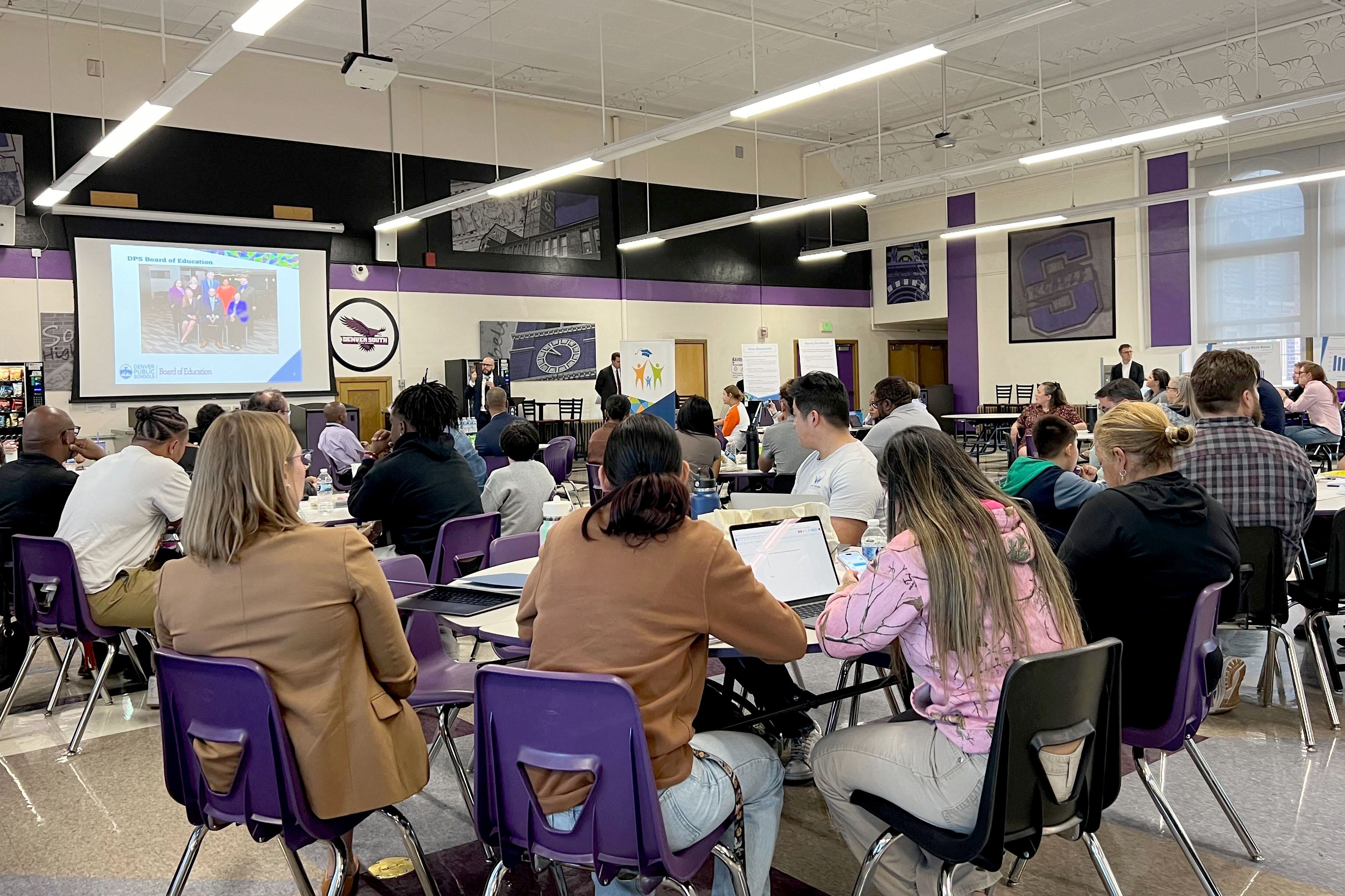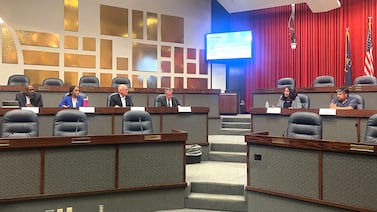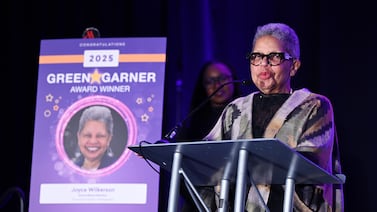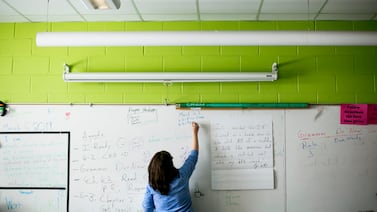Sign up for Chalkbeat Colorado’s free daily newsletter to get the latest reporting from us, plus curated news from other Colorado outlets, delivered to your inbox.
In the South High School cafeteria Tuesday night, Denver Public Schools held the first of six community meetings ahead of likely school closures. More than 100 people listened as the district made its case for why closures are necessary in the face of declining enrollment.
“We don’t have enough scholars to fill our buildings, and that’s the harsh reality,” Superintendent Alex Marrero said at the meeting.
Marrero has pledged that on Nov. 7, he will release a list of schools that he is recommending be closed for low enrollment. The Denver school board is scheduled to vote just two weeks later, on Nov. 21. The schools would close at the end of the school year.
School closures are unpopular. In Denver, as elsewhere around the country, communities of color have more often been impacted by closures, which parents and students say can be disruptive and demoralizing. But Marrero and other district leaders frame the closures as a way to provide a better education for students of color and those from low-income families, who are more likely to attend under-enrolled and under-resourced schools.
“This is us making sure we can address the inequities,” Marrero said.
“It is painful,” he added. “Some will say it’s even brutal as we engage in the process. But after year one, year two, we see the benefits.”
DPS has long been criticized for doing a poor job of engaging the community in big decisions. A recent process that led to the closing of three small schools at the end of the 2022-23 school year was full of starts and stops and shifting recommendations, and it ended with an abrupt vote.
The six community meetings are the district’s attempt to do better this time around. But parents who attended the first meeting at South High questioned whether the engagement was genuine.
“It just feels a little like shouting into the void,” said Gabby Leavitt, a parent at Palmer Elementary, which was recommended for closure in 2022 but ultimately spared.
Parents also asked why the proposed timeline is so short.
“When you’re given the news of your school closing, that’s pretty drastic,” Stephanie Leigh, a parent at Thomas Jefferson High School, said to the other parents and district officials sitting at her round cafeteria table when it was time to discuss the district’s presentation.
Leaving just two weeks between when families find out their school could be closed and when the final decision is made communicates that the district doesn’t care, she said.
At the end of the meeting, Marrero took the microphone and answered that criticism and others.
“Two weeks can be seen as a tight timeline,” he said, “but when you put it in perspective, this has been years in the making.” Enrollment in DPS has been declining since 2019.
The bulk of the meeting consisted of district officials giving a slide presentation about the causes of declining enrollment in DPS: lower birth rates and higher housing prices that have pushed families out of the city. Officials explained that Denver schools are funded per student, and that schools with fewer students have less money to spend on staff and programming.
Officials played a new district-made video about two fictional schools, one with healthy enrollment and one with low enrollment. Over stock videos of children in school, a voiceover explained that the bigger school had classrooms “buzzing with activity,” full-time art, music, and physical education teachers, and after-school clubs. It also had robust special education and mental health staff, interventionists to help students who were struggling academically, and multiple teachers per grade so parents could request a classroom switch if they wanted.
The smaller school, the voiceover explained, only had a part-time music teacher and no after-school clubs. It had just one teacher per grade, no extras like field trips or visiting artists, and limited special education or mental health services, so a student who was struggling “may have to wait hours or even days to speak with a professional.”
If DPS addresses declining enrollment, the video said, “no student would have to wait for help or miss out on opportunities just because their school isn’t fully enrolled.”
Even though small schools have less money, they cost the district more per-student to operate, because they can’t take advantage of economies of scale, officials said. Schools with 215 students or less cost an average of $16,724 per student to run, while larger schools cost an average of $10,207 per student to run, according to the district’s presentation.
Closing schools would save the district money that it could then spend on other priorities, officials said, though they did not provide a dollar amount.
DPS has scheduled five more community meetings between Wednesday and Oct. 22. Each meeting is in a different region of the city, and each region is affected by declining enrollment differently, with the central, northwest, and southwest parts of Denver hit the hardest.
Melanie Asmar is the bureau chief for Chalkbeat Colorado. Contact Melanie at masmar@chalkbeat.org.






